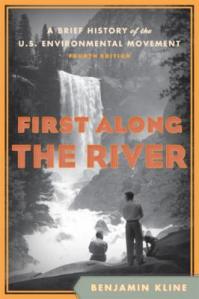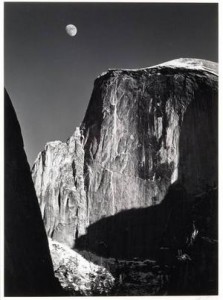
 The sustainability movement has gained some ground in recent years, evidenced by recycling education in elementary schools, green marketing efforts, and green jobs to support new economies. Sometimes this might seem like we’re in a brave new world, but at the same time we are fighting the exact same battles citizens have been pushing along for decades – for better or worse. A recent reading of First Along the River: A Brief History of the US Environmental Movement I had a much better appreciation of where the modern environmental movement has come from and perhaps where we are going.
The sustainability movement has gained some ground in recent years, evidenced by recycling education in elementary schools, green marketing efforts, and green jobs to support new economies. Sometimes this might seem like we’re in a brave new world, but at the same time we are fighting the exact same battles citizens have been pushing along for decades – for better or worse. A recent reading of First Along the River: A Brief History of the US Environmental Movement I had a much better appreciation of where the modern environmental movement has come from and perhaps where we are going.
The most important lesson I took from the book was that the argument has not always been environment vs. economy. Instead, environmental protection and remediation was uniformly favored by Democrats and Republicans alike. The big decision was whether to go about that protection through preservation or conservation. The former refers to the formation of national parks, heritage areas, and wilderness tracts to be preserved as is for future generations. The value of such land is not the immediate return of a healthy environment, but the inherent value of the existence of pristine nature. Enter the National Park Service.
The conservation movement, housed mostly under the leadership of Gifford Pinchot’s Forest Service, leaned on the production of ecosystem services for support. THe forest and other tracts of wilderness could be cultivated to produce wood, medicine, and meat for human settlements while maintaining an investment for future generations in the form of public lands.
Version of the preservation vs. conservation discussion still occur, but both are housed under the environmental movement which largely falls under the umbrella of the Democratic platform. Republicans espouse either will hurt the economy and therefore will not prioritize environmental issues while the number of jobs in the US is still a number one task.
On the flipside, while this shift happened in the first half of the 20th century, it is also important to remember that American laws to protect the environment for human health and well-being only began in the early 1970’s. It took a blazing Cuyahoga River in Ohio to jump-start Earth Day and publication of Silent Spring to make people rethink the benefits of unbridled technology. Perhaps most noteworthy is that the first Earth Day, the creation of the EPA, passing of the Clean Water Act, Clean Air Act, and the National Environmental Protection Act all happened under the Nixon administration. It would be perhaps the last time the environment was a bipartisan issue.

The story of the environmental non-governmental organization follows a parallel history to the issues themselves. Starting with a handful of preservationists working to save Western lands as wilderness and national parks, the 1970’s brought a blossoming of environmental organizations each choosing different strategies to advance their agendas. Some chose to work within the new legislative framework while others took a direct action route, blocking roads, sitting in trees, and staging protests. Both have their merits and their drawbacks in the path to sustainability.
Perhaps the biggest lesson learned is matching dates to the ideas that the modern environmental movement is promoting. Agricultural sustainability efforts such as reducing fertilizer inputs and reducing soil erosion, started in the 1940’s under Franklin Delano Roosevelt’s New Deal. Pesticide problems were gracing the headlines through the 1950’s as farm valley residents hospitalized themselves during pesticide spraying. Gas taxes, the national speed limit of 55 mph, and fuel economy standards began under Carter in 1975 and we are still struggling to support those decisions decades later.
The environmental movement has taken a distinctly global turn after the Earth Summit in Rio in 1992 and subsequent involvement by the UN. Developing countries are just beginning to face the same issues the US faced in the early 1900’s with the closing of the frontier. The global frontier, if you will, has recently closed and the international community is awakening to the finite resources available on Earth, beginning to make plans for the best way to use them in the future. History, mistakes and successes, may have some lessons for us as we move to the future. A little brush-up on US history like this book should be required reading for all students of sustainability today.
Reference: Kline, Benjamin. 2011. First Along the River: A Brief History of the Environmental Movement. Rowman & Littlefield, 4th ed.
Thanks for the summary. It’s interesting how the US movement now provides the backbone for the global movement. A mental gap for me is what the rest of the world is contributing. I would love to hear of burgeoning environmental movements outside the west.
I agree completely – and I even wonder about the European history, as their regulations are stricter than ours now and I suspect they followed a slightly different path since they didn’t have vast tracts of wilderness to work with.